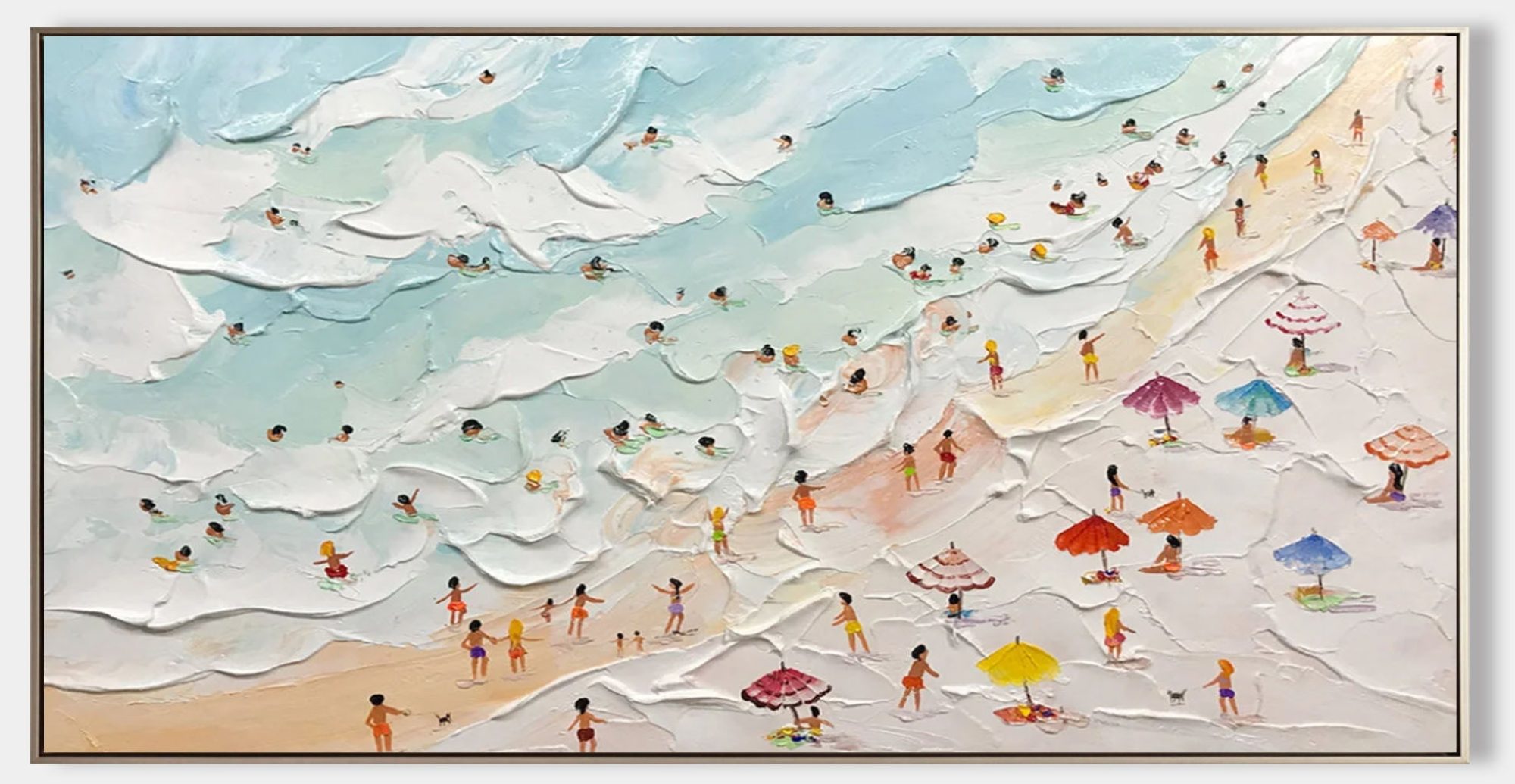Understanding Light in Coastal Landscapes
Light plays a starring role in any beach painting. It touches everything—sand, sky, and water. A strong light source adds realism and drama. In beach scenes, sunlight should always have a direction—make sure your shadows agree with it.
Golden Hour or High Noon? Pick Your Time
The time of day affects everything. The “golden hour” has soft, warm tones with long shadows. Noon gives bright whites, bold blues, and high contrast. Decide on the time first—your palette depends on it.
Texture Tricks for Realistic Sand and Water
Don’t paint the beach like a flat carpet. Use thick strokes (impasto technique) or even a palette knife to give the sand some grainy texture. For water, layering translucent blues and greens creates depth. Soft blending works best where water meets sky.
Color Mixing Tips
Avoid using just “straight out of the tube” blue for the ocean. Mix it! Try ultramarine with a touch of burnt sienna, or cobalt blue with titanium white. Mix colors on the canvas to create more natural transitions.
Adding Realism with Contrast
Your painting pops with contrast. Highlight edges where light hits. Add deeper shadows under waves or behind dunes. And don’t forget the soft glow at the horizon—it gives your scene that dreamy quality.
Reference Reading
“How to Paint a Simple Beach Scene in Oil: A Beginner’s Step-by-Step Guide (with video)“
